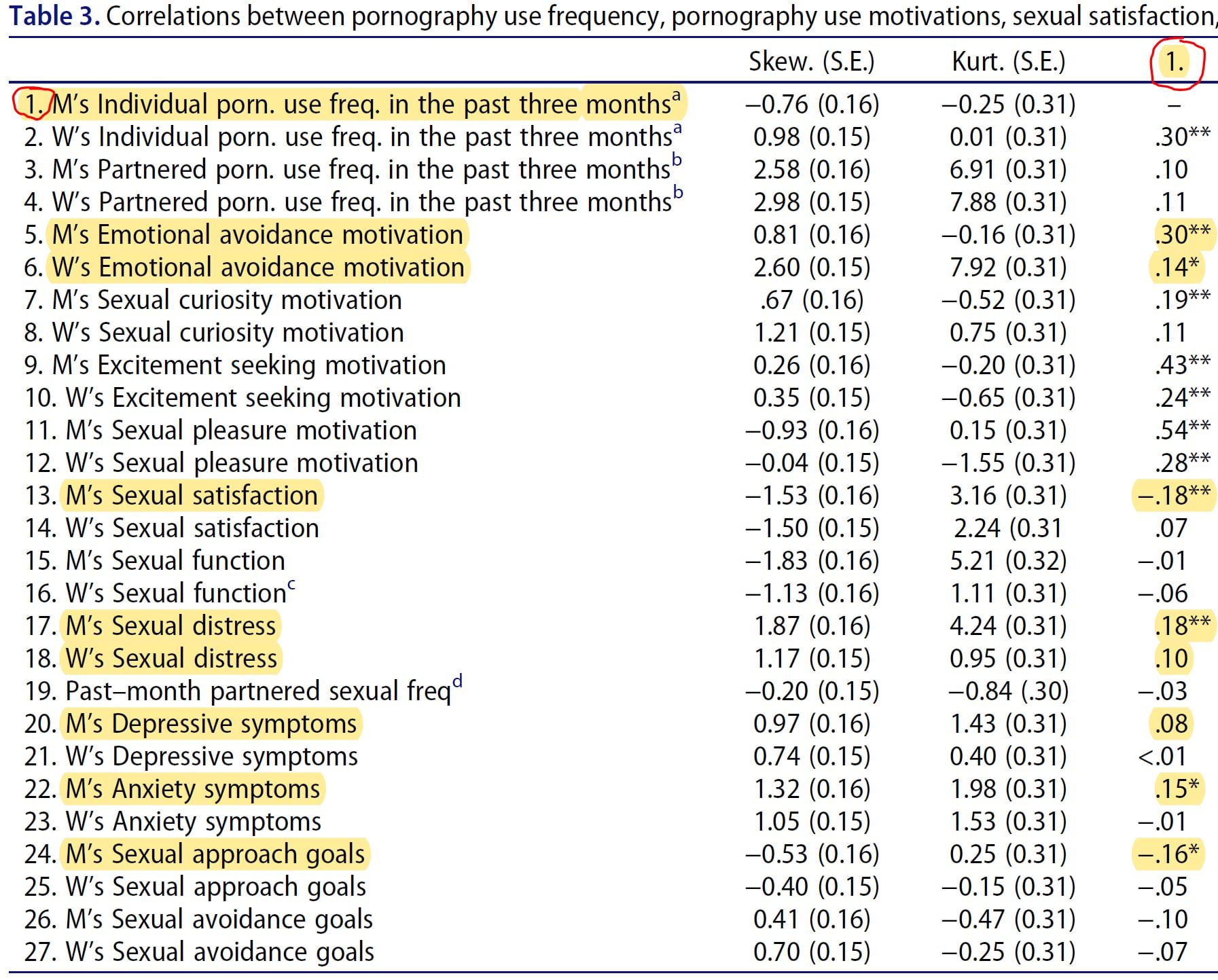COMMENTS: Nationally representative studies usually report that the % of women in long-term relationships that rêzbirêz porn bikar bînin nisbeten pir kêm e. Ji ber vê yekê, vedîtinên ku pornoya jorîn ji bo jinan bikar tîne bi encamên çêtir re têkildar e, timûtim li gorî rêjeyek piçûk a jinên ku zayendîtiyê li ser bingehek domdar bikar tînin, bingeh digire. Vê yekê van dîtinan ji raya giştî re kêmtir balkêş dike ji nivîskarên wan ku carinan em bawer bikin.
Encamên ji bo mêran balkêştir in, ji ber ku pirraniya mezin a zilaman porno bikar tînin. Lêkolîna heyî ya li ser cotan ragihand ku ku karanîna zilamê zilam bi erênî bi ya wî re têkildar bû razîbûna zayendî ya xizan, fikar, depresyon, tengasiya zayendî ya mezin, û dûrketina hestyarî. Bikaranîna cinsî ya zilam jî bi armancên cinsî re neyînî re têkildar bû (dûrbûn / nêzîkbûn).
~~~~~~~~~~~~~~~~~~~~~~~~~~~~~~~~~~~~~~~~~~~
J Sex Res . 2021 Mar 16;1-15.
doi: 10.1080 / 00224499.2021.1893261.
Beáta Bőthe 1 , Marie-Pier Vaillancourt-Morel 2 , Sophie Bergeron 1
PMID: 33724108
DOI: 10.1080/00224499.2021.1893261
Abstract
Pornography use is prevalent, even among partnered individuals. Although pornography use motivations represent key predictors of sexual behaviors, prior studies only assessed the associations between pornography use frequency and sexual wellbeing, with mixed results. This cross-sectional dyadic study examined the associations between partners’ individual and partnered pornography use frequency, motivations, and sexual wellbeing. Self-report data from 265 couples (Mage_men = 31.49 sal, SD = 8.26; Mage_women = 29.36 sal, SD = 6.74) were analyzed using an actor-partner interdependence model. Men’s greater emotional avoidance motivation was related to their own lower sexual function (β = -.24, p = .004) and greater sexual distress (β = .19, p = .012), while their higher sexual curiosity motivation was related to higher partnered sexual frequency (β = .15, p = .031), their own greater sexual satisfaction (β = .13, p = .022), sexual function (β = .16, p = .009), and lower sexual distress (β = -.13, p = .043). Women’s higher partnered pornography use frequency was associated with their own greater sexual function (β = .15, p = .034) and lower sexual distress (β = -.14, p = .012). Additionally, women’s higher individual pornography use frequency (β = .33, p < .001) and lower sexual pleasure motivation (β = -.35, p = .002) were associated with higher partnered sexual frequency. No partner effects were observed. Findings highlight that women’s pornography use frequency and each partner’s motivations might play crucial roles in couples’ sexual wellbeing.
